This is one in a series of posts on the Sony alpha 7 R Mark IV (aka a7RIV). You should be able to find all the posts about that camera in the Category List on the right sidebar, below the Articles widget. There’s a drop-down menu there that you can use to get to all the posts in this series; just look for “A7RIV”.
A few days ago, I set out to measure the shutter shock of the a7RIII and a7RIV. You’ll notice that there has been a gap in my nearly-daily postings, and it’s not for lack of trying. I’ve run into some difficulties. In my first run of tests, I ran into two serious issues, either one of which would have made me have to throw out all the data and start over.
The first was just a dumb move on my part: I accidentally left IBIS on in both cameras, even though they were mounted on a tripod. This contaminated the results, especially those at low shutter speeds. I think the main mechanism for this was the IBIS recentering the sensor after it had been decentered by its attempt to deshakify (that’s a technical term) the previous exposure.
The second was an unplanned side effect of a well-meaning decision. Fearing that initial errors in manual focusing could make comparisons between cameras difficult, I chose to use autofocus. Unfortunately, in many cases, the shot-to-shot scatter due to autofocus errors was at least as large as the effect I was trying to measure, making it hard to make sense of the results.
Back to square one, I tried again. Out of concern for focus shift during 500-shot series, I put away the 135 mm f/2.8 Batis native E-mount lens, and took out a 135 mm /f2 Zeiss Apo-Sonnar F-mount lens and a Kipon F-to-E adapter. I set the compression to none, the ISO to 100, the lens to f/4 and mounted the cameras in landscape orientation in turn to a 5-section Gitzo travel tripod with a light RRS ball head, using adapter plates on the body of the cameras, which is the most stable location with the cameras in landscape orientation. I did not use portrait orientation, which would accentuate the effects of the shutter motions on the a7x cameras, since I don’t yet have an L-bracket for the a7RIV.
I lit my slanted edge target with an Aputure 120d II LED light with a 12-inch parabolic reflector mounted and the light set to 5500K. I focused once on the target and made all subsequent exposures (about 500 of them) with each camera without changing the focus. Using a remote release and A exposure mode, I made 16 exposures about 1 second apart at each setting with the light adjusted to give me shutter speeds of
- 1/400
- 1/200
- 1/160
- 1/125
- 1/100
- 1/80
- 1/60
- 1/50
- 1/25
- 1/10
I processed all the files in Lightroom, with white balance set to flash, sharpening and noise reduction turned off, and all other settings at default. I exported crops of the slanted edge target as TIFFs, and computed MTF50, which is a good proxy for sharpness, using Imatest. Then I analyzed the statistics of the sets. Here’s an analysis of one of the horizontal edges in the target with the a7RIV shutter set to mechanical, electronic first curtain (EFCS) and fully electronic (what Sony calls Silent Shooting).
The vertical axis is average, or mean, or mu of the MTF50 (the spatial frequency where the modulation transfer function is 50%) measures in cycles per picture height. The horizontal axis is the inverse of the shutter speed: if you see 160, it means 1/160 second. The dark blue line is for the mechanical shutter, and the blue dots are the measured points.The mechanical shutter curve behaves pretty much as expected. At high shutter speeds, there is little blur because the camera doesn’t have much time to move while the shutter is open. At low speeds, most of the vibrations have damped down during most of the time the shutter is open, so there’s not much blur. In between, there is a point where the resonant frequencies of the camera/lens/head/tripod assembly conspired to do damage to image sharpness. In this case it’s 1/125 second. With EFCS, there’s less vibration because the camera doesn’t have to wind and release the shutter just before the exposure. With electronic shutter, there’s the lease vibration of all because no part of the shutter assembly moves either before, durning, or after the shutter is released.
You might ask why the electronic shutter is better than EFCS in this case. There are two possible reasons, and they both probably play a part. First, the second curtain itself induces vibration. This mostly affects higher shutter speeds. Second, the vibrations from the exposure one second before the current one may not have completely died away. That mostly affects lower shutter speeds.
So far everything is working as expected. In the next picture, which is the same graph except the data is from the a7RIII exposures, you’ll see a situation where that isn’t true at all.
I can’t explain this. Maybe the sun and moon and stars aligned so that there was vibration cancellation. I went over the data several times, and double checked the EXIF information to make sure the cameras were set up the way I thought they were, and reran Imatest on another horizontal edge, but I didn’t find anything untoward.
Here’s the mechanical shutter data for both cameras:
The heavy lines are the means of the MTF50s. The lighter ones are the means plus the standard deviations (mu + sigma, in statistician-speak) and the means minus the standard deviations. The a7RIV lines are better because, due to its finer pitch, the camera has a smaller pixel aperture.
Here’s the same set of curves for EFCS:
Now let’s look at the vertical edge, first for the a7RIV:
Now, except for the electronic shutter case, we see blurring at longer shutter speeds. This is because the side-to-side vibrations take longer to die away, and all but the first shots are affected by the shots that came before, and mostly by the shot that came immediately before.
For the a7RIII:
That EFCS line appears too good to be true, but I double-checked the data.
Mechanical shutter with both cameras:
EFCS with both cameras:
I don’t know why the a7RIII looks so good here.
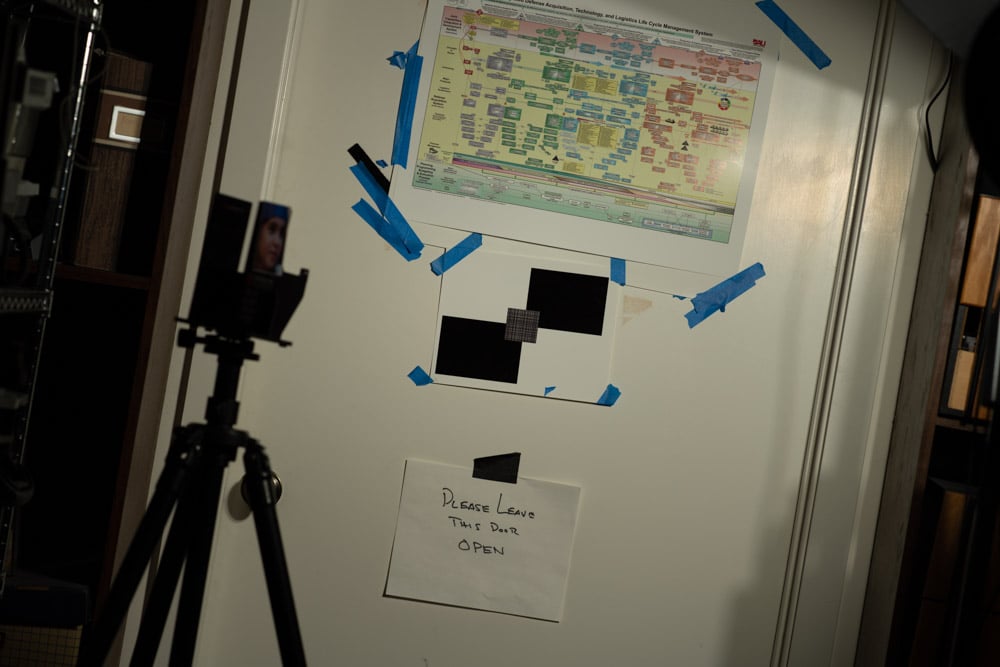
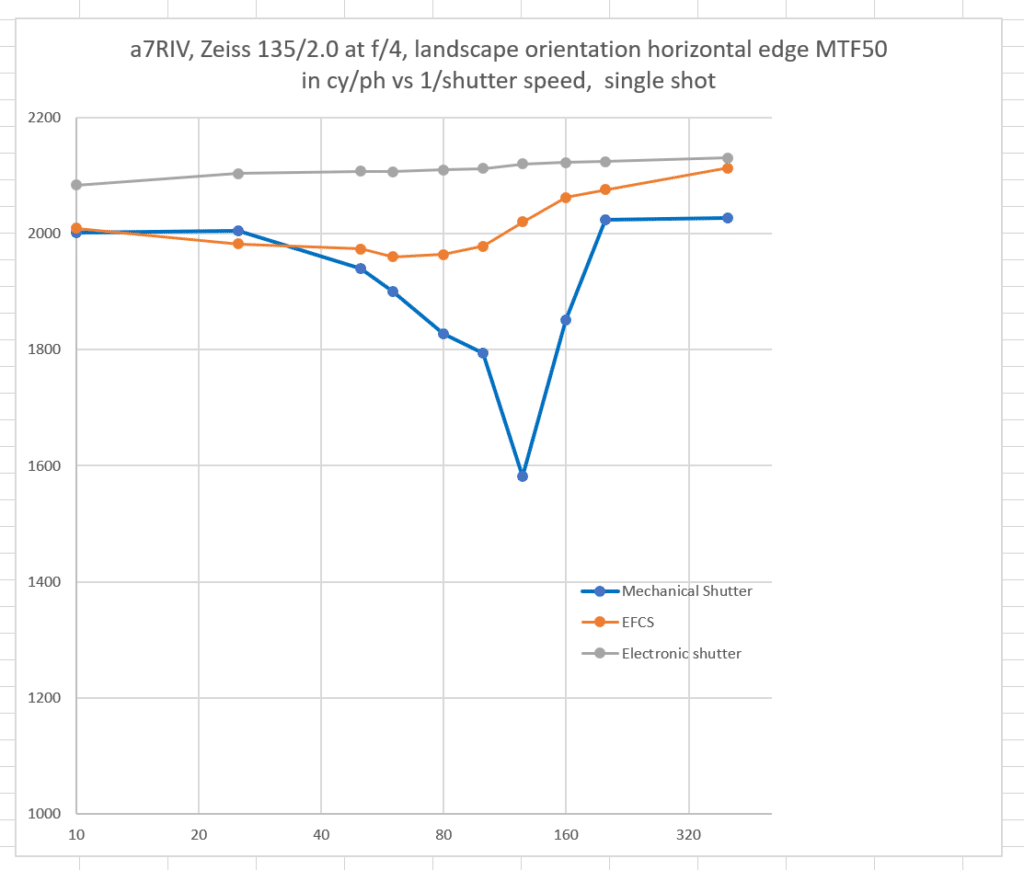
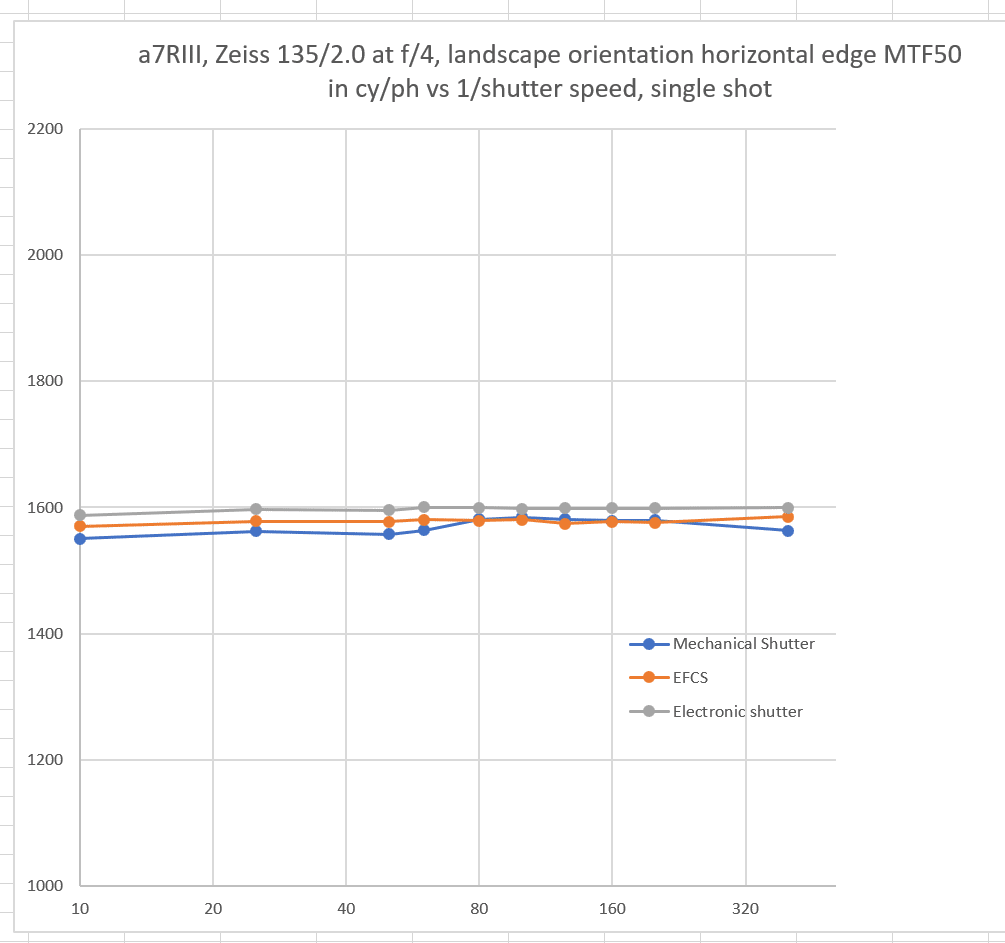
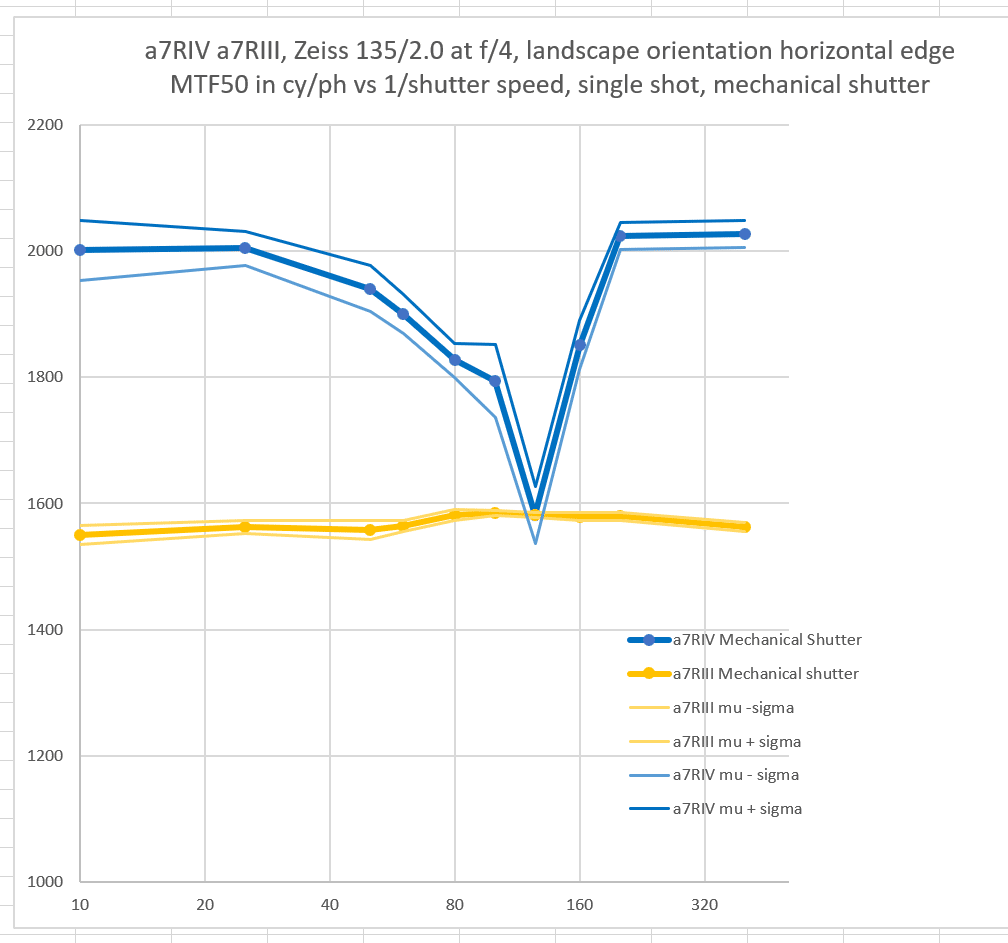
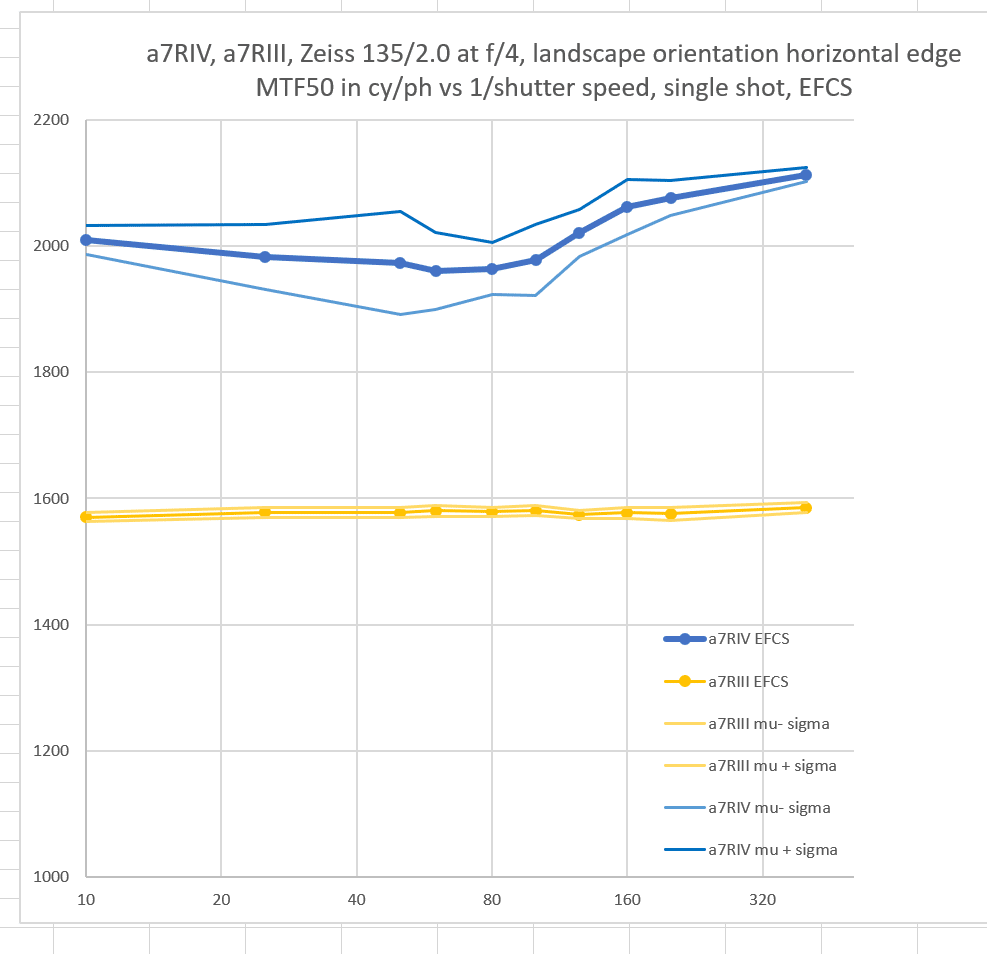
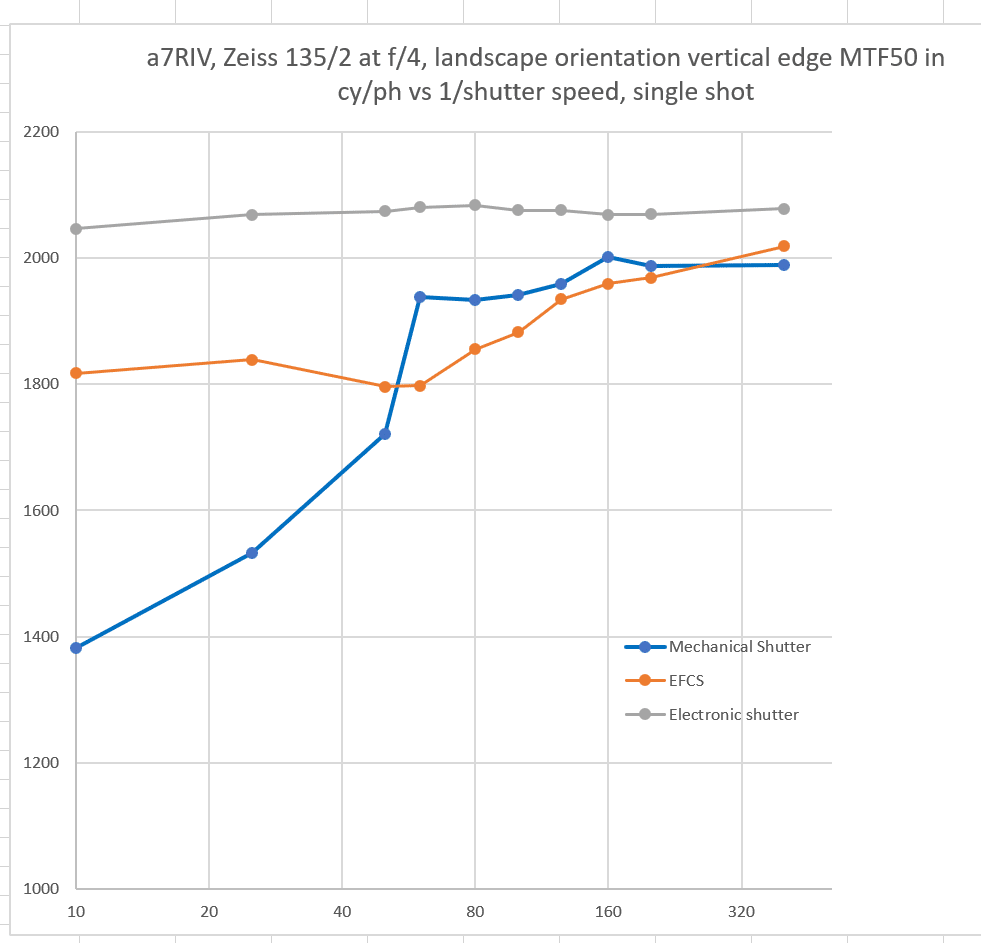
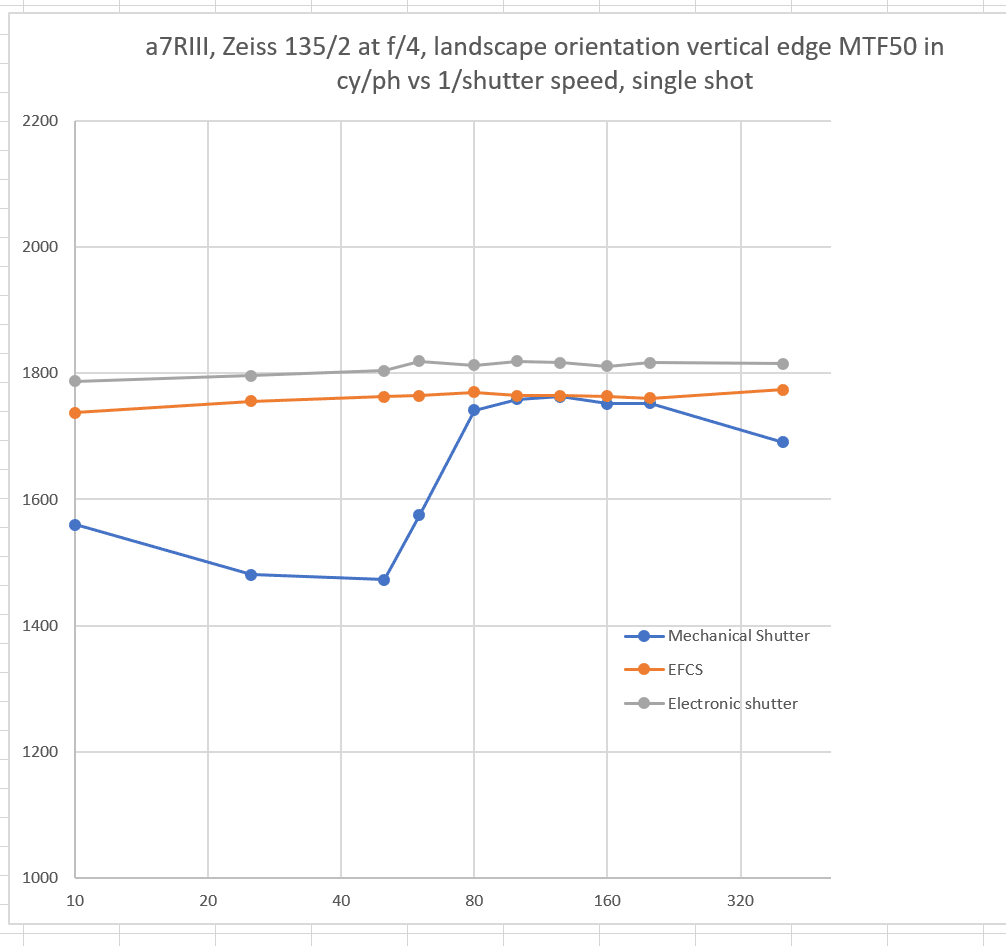
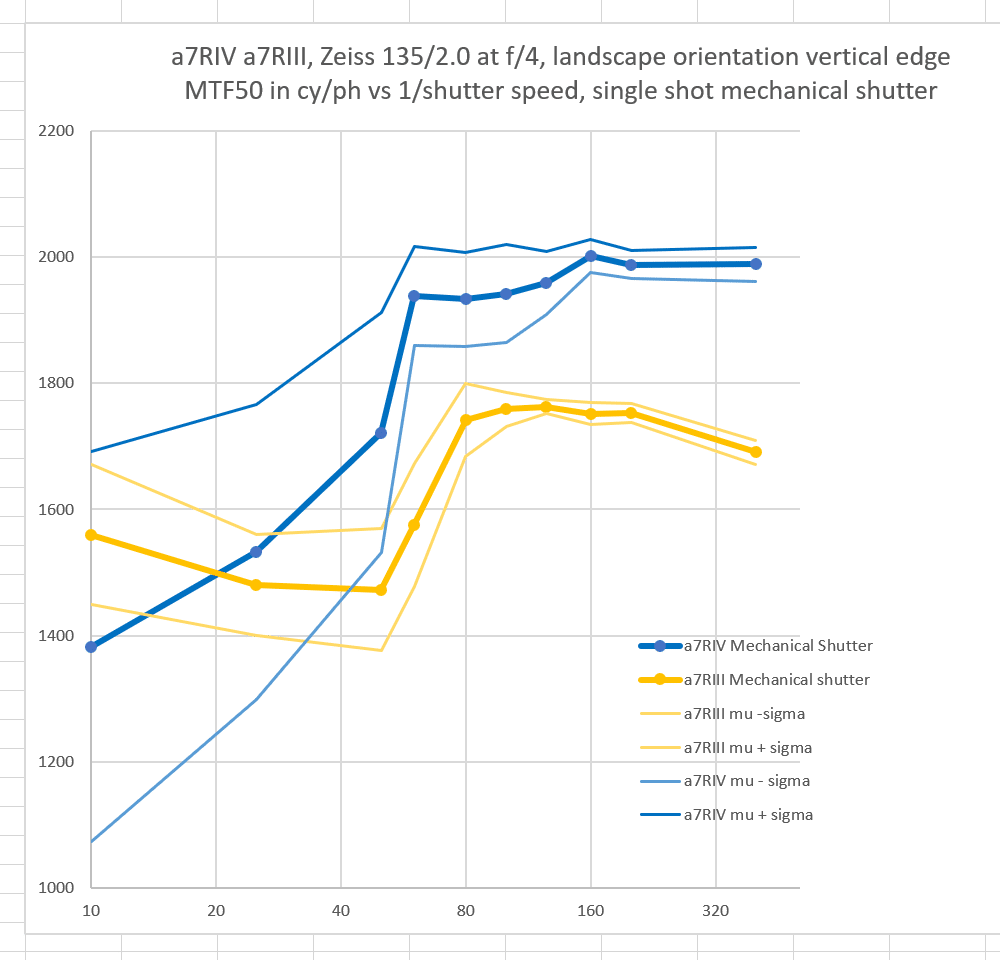
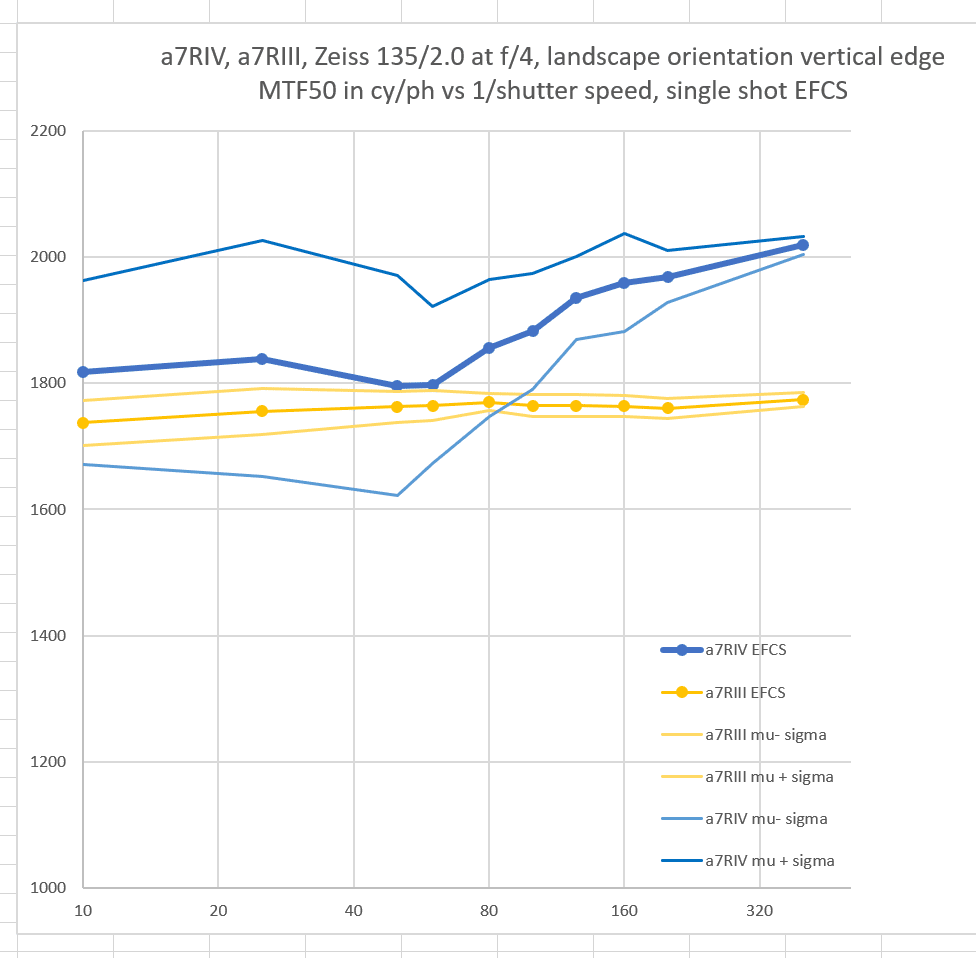
Amplitude of vibration vs pixel size?
The larger pixel size of the a7RIII will smooth things out, but it shouldn’t happen to that extent.
I suspect the same. IBIS stiffness when not engaged?
Amazing!!! May it be
https://en.wikipedia.org/wiki/Tuned_mass_damper
? Some lucky coincidence of adapter/lens/whatever having a suitable resonance frequency (on this particular implementation of the mount), so that all the energy of vibrations goes into a mode which does not affect the quality of the photo?
With your infinite amount of time and desire to investigate cameras for the whims of the internet…
How does the GFX100 compare to the GFX50? Leica M10 vs M10-D? Fuji X-H1 vs. Fuji X-T3?
Does an audibly quiet shutter translate into less shutter shock? Or is it simply muffling the transmission of the shock to the photographer’s ears? (Leica).
With Fuji, the sensor has IBIS but in the GFX100 and X-H1:
“ The shutter unit is suspended with five springs so they act as a shock absorber when the shutter is pressed. With this, vibration is not transmitted to other devices inside the camera.
The tension of each of these five springs is different because the impact on each of the 5 points is different when the shutter is pressed. The effect of this countermeasure is astounding. The impact on the image quality is barely noticeable.
The shock absorber also contributes to quietness of the shutter.”
I actually thought the XH1 has sharper images than the XPro2/XT2 due to the damped shutter but it would be interesting to see if your advanced measurements support that hypothesis that cameras with spring balanced shutters are superior to the A7R3.
I know you don’t shoot APS-C but given your relationship with your camera dealer and the common pixel design between the XT3, A7R4, GFX100 it would be interesting to see shutter shock at a pixel level comparison and I am sure the dealer would lend you the XT3 and a 80Macro for a day. Somewhere, I thought I read that you have used CameraWest before and if so, that gets you access to the M10 cameras.
Lots of interesting points there.
First off, I don’t test cameras and other equipment that I have no interest in using. And I don’t usually — with one exception that I can think of when I thought I had a bad copy of the CO 60/4 macro and rented another copy from Roger at LensRentals — rent or borrow equipment, because I don’t like to feel rushed when I’m testing gear.
Second, on most MILC cameras these days, shutter shock is mostly academic, since EFCS is available. Shutter shock was the band of the a7R because it had no EFCS. WHen the a7RII came out, shutter shock was no longer much of an issue not because there was a lot less of it with the mechanical shutter, but because it had EFCS. The availability of EFCS has pushed shutter shock way down in my testing priority list. I don’t normally test it these days, and only did so in the present instance because someone claimed that the shutter shock of the a7RIV was much less than that of the a7RIII.
Third, in the testing that Mike Collette performed on the a7R, the main source of the vibration came not from the release of the shutter curtains, but by the winding of the shutter, which occurs after the shutter release is pressed in mechanical shutter mode, but (obviously) before the first curtain is released. Unless the motor is suspended with the shutter, any spring system isn’t going to help with that. If the motor is suspended, it will, and will have the additional advantage of not unsettling the IBIS system in cameras so equipped. IBIS and shutter shock usually don’t play well together.
A data point on Leicas and shutter shock. I have not tested the M10, but I had an M240 for several years, and it had a lot of shutter shock and no EFCS. Fortunately, there was a workaround: turn off live view before tripping the shutter.
Just looking at this post though, it suggests:
For A7R3, ECFS is great and has no issues.
For A7R4, ECFS takes care of a lot of shutter stock but if you have a static object, a pure Electronic Shutter is sharper than ECFS
(?)
Since you do have a GFX100, it would be interesting to see how the data plots out. ECFS changes the appearance of bokeh so it is not a freebie, although the benefits generally outweigh the deficits.
Jim – on the A7RIV, does silent shooting/silent shutter reduce bit depth in single shot mode or does it remain at 14 bits? Thanks!